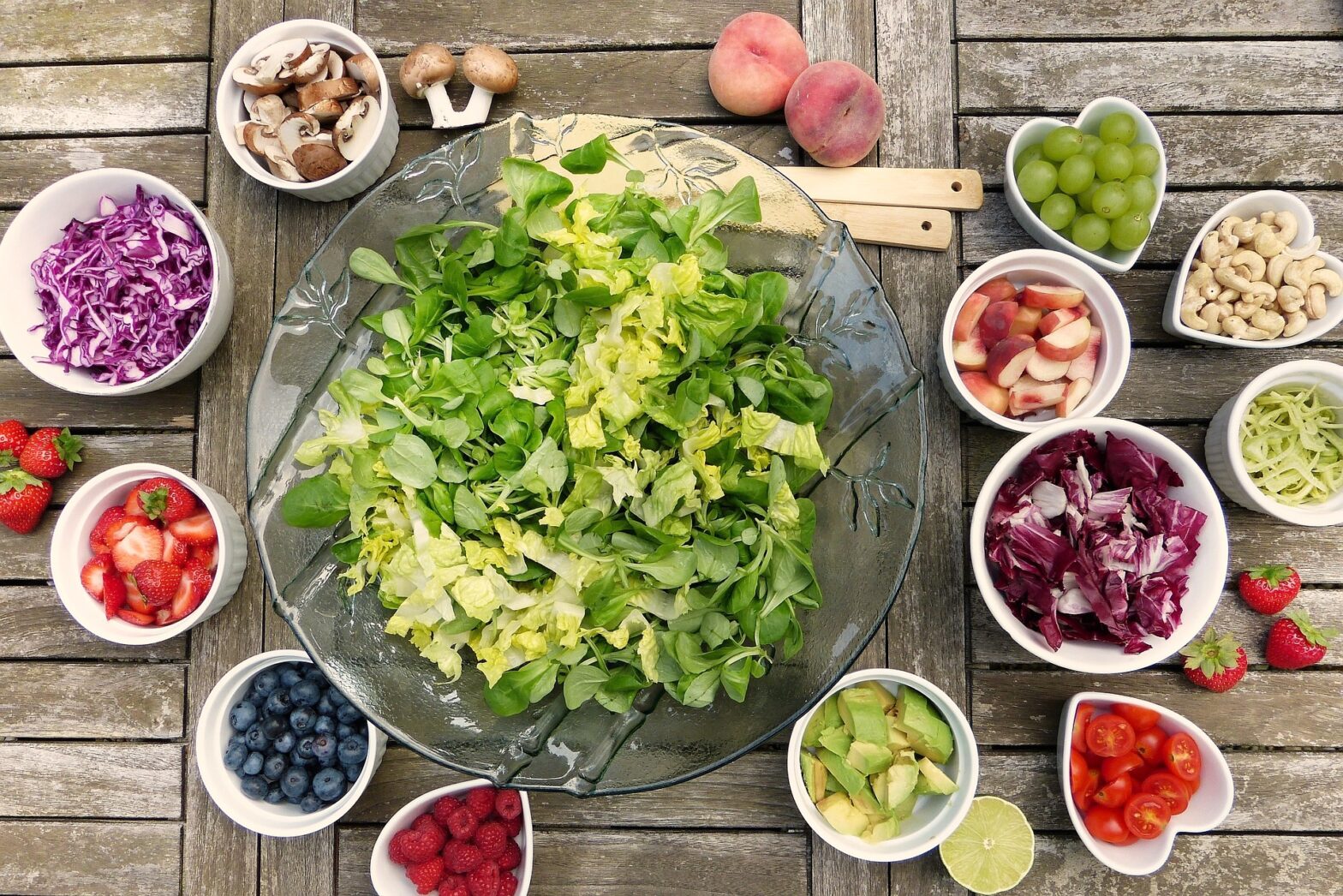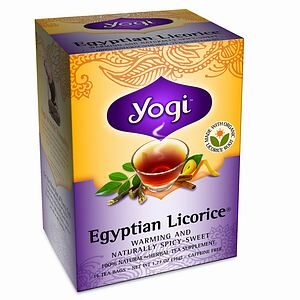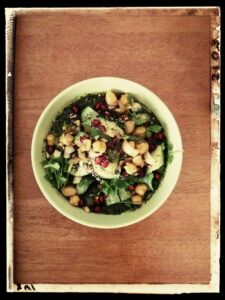Top Foods to Eat (and Avoid!) If You Have Endometriosis

Let’s face it. Life with endometriosis is no walk in the park.
It’s very painful and can be incredibly debilitating. Just living everyday life through the pain is challenging, and if you’re trying to conceive, it’s even more so. Your menstrual pains are extremely heavy and painful. Having your period and having intercourse are both wrought with so much pain, that if you have endometriosis, it adds a complicated layer to your fertility journey.
Here I’ll share a little more about endometriosis and give suggestions on managing the condition through your food.
WHAT IS ENDOMETRIOSIS?
Endometriosis (informally known as Endo) is a disorder in which tissue that is similar to the uterine lining actually grows outside the uterus. In the most common endo cases, the tissue is found in the ovaries, the fallopian tubes and the pelvis, resulting in heavy inflammation as the body’s natural response to tissue growing somewhere it shouldn’t.
Endometriosis is very common, affecting 1 in 10 women during their reproductive years, – approximately 176 million women worldwide, according to the World Endometriosis Society and the World Endometriosis Research Foundation.
If you suffer from pelvic pain and infertility, the chances are high that endometriosis could be an underlying cause – endo is one of the most common causes of these conditions in women.
HOW ENDOMETRIOSIS AFFECTS FERTILITY
Endometriosis doesn’t directlycause infertility, but many women grappling with trouble conceiving are found to also suffer from endo. As previously stated, endometriosis is largely characterized by inflammation and extreme pain.
The fallout from the inflammation caused by endo includes heavy scarring, blockage of the fallopian tubes, and blockages in the ovaries, which can cause issues with regular ovulation. Endo can also physically distort a woman’s pelvic anatomy. Not to mention that intercourse can be extremely painful, so trying to conceive the old-fashioned way is difficult (and no fun).
Endometriosis also results in a hormonal imbalance, primarily an unhealthy increase in estrogen. Since estrogen is the hormone that causes your uterine lining to thicken each month, an excess of lining tissue elsewhere in the body will lead to increased estrogen. So keeping estrogen levels in check is very important.
There is no cure for endometriosis but it can be removed. The only way to remove it is through surgery, although there’s no guarantee it will be successful. This can significantly improve your chances to conceive.
If surgery isn’t a viable option for you, or you don’t want to have surgery for some reason, you can learn to manage and live with the condition.
One important way to manage endo is to watch what you’re eating. I’ve said it so many times before and I’m sure this won’t be the last time I say it – food is everything. Virtually everything regarding our physical health and emotional well-being comes down to what we eat.
Since endometriosis is largely an inflammatory condition, one way to effectively manage it is through eating primarily anti-inflammatory foods, and avoiding those that increase or exacerbate inflammation. Another way is to eat foods that encourage hormonal balance, to keep estrogen levels in check.
EAT THIS! WHAT TO EAT TO MANAGE ENDOMETRIOSIS
Leafy green vegetables. These foods are rich in B vitamins, minerals, fiber and iron that are all beneficial for our health overall, and particularly for women with endometriosis. They are also anti-inflammatory foods that will keep inflammation down in our bodies. Finally, the rich iron in vegetables helps replace the iron lost through heavy menstrual bleeding characterized by endo. Make sure you eat vegetables while they’re fresh, and stick to organically grown.
Fruits. Fruits are rich in fiber, and some studies show that increasing fruit intake, particularly citrus fruits, can reduce the risk of developing endometriosis. Among other things, fiber helps keep estrogen levels balanced, which is important for endo sufferers. In general, increased consumption of fruits and vegetables was linked to a reduced risk of endometriosis, and those women who eat three portions of fruit per day having a 14% reduced risk of endometriosis.
Whole Grains. Whole grains, such as oats, quinoa, and brown rice, are extremely beneficial. Unlike refined grains, which strip the grain of its natural nutrients, whole grains contain all the nutritional value and are great sources of fiber, vitamins and minerals. Whole grains have also been shown to keep estrogen levels balanced.
Fatty Fish. Fatty fish like salmon are high in Omega-3 fatty acids, which have anti-inflammatory properties. They have also been shown to help reduce menstrual pain, which is very common in women with endometriosis. Omega-3s may also help reduce the risk of developing endo in the first place, although evidence is inconclusive. Other good sources for Omega-3s include oysters, sardines, flax seeds and chia seeds (the seeds are great for putting into your morning smoothies!), extra virgin olive oil for cooking, and walnuts for snacks.
NOT THAT! WHAT TO AVOID TO KEEP ENDOMETRIOSIS FROM GETTING WORSE
Dairy. Dairy is a highly inflammatory food. Cheese, full-fat milk and yogurt are all high in saturated fats, which increase inflammation. If you have endometriosis, it is best to avoid these foods. The fertility community suggests that some full-fat dairy can help improve fertility; I don’t necessarily disagree with this but believe that the benefits of full-fat dairy can be found in other foods – leafy green vegetables are loaded with calcium, nuts, seeds, fish and avocados have healthy fats, and go for a walk in the sun to get vitamin D. If you like to drink milk or use it for your smoothies, look to plant-based milks instead.
Gluten. While there hasn’t been a demonstrated increase of women getting endometriosis from eating foods with gluten, gluten is an inflammatory agent that increases inflammation in our body. Studies have shown that women with endo suffer less pain if they eliminate gluten from their diet.
Red meat. Many studies have linked red meat, inflammation and endometriosis symptoms, and that women who eat red meat every day are nearly twice as likely to develop endometriosis as those who eat more fruits and vegetables. Red meats from conventionally-fed animals also have synthetic hormones that are harmful, so if you do eat meat, eat it in moderation and stick to organic, grass-fed meat.
Processed Foods. This one is a no-brainer. The processing of food to give it a longer shelf life involves using many chemicals, which are bad for us on many levels, not just for endometriosis. Colors and dyes, partially hydrogenated oils (“trans fats”), preservatives, and sugar are all found in these foods and may promote pain and inflammation. Processed foods are also low in essential nutrients and fiber. Bottom line, if it comes out of a box or bag, it’s probably best to avoid it.
Plant oils. Plant oils are rich in Omega-6 fatty acids, which may promote pain and inflammation, which would make endo conditions even worse. Sunflower oil, corn oil and soybean oils are the ones to avoid. Instead, cook with olive oil, which is rich in Omega-3 fatty acids, which helps keep inflammation down and pain at bay.
To your fertility,
Steph xo
You may like:
Fertility Clinic in Sharjah | Infertility Treatment in Sharjah | IVF Cost in Abu Dhabi


